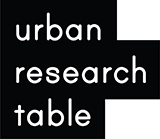Urban Redesign Studio 2018 Winter: URT Member Joined as Teaching Assistant
URT’s Siqi Li joined, as a teaching assistant, the Urban Redesign Studio 2018 Winter at the University of Tokyo. In view of the characteristics of disaster-prone areas in Japan, the aim of this studio was to investigate reconstruction planning and design for disaster-stricken cities. Students were required not only to propose a recovery plan but also to think about the future development of the city from a long-term perspective.

Located on the edge of Hiroshima, Kure City was chosen as the target of the studio. Suffering from the debris flow brought by Typhoon No. 7 in 2018, many areas in Kure were damaged. Eleven master’s students were divided into two groups, each focusing on a different area.

The first of these areas, Tenno, is located north of central Kure. It is regarded as the city’s gateway, with beautiful riverbanks, coasts and a certain number of tourists and commuters. Typhoon No.7 damaged houses and revealed the insufficient carrying capacity of riverbanks. Named “Natural Harmony”, team Tenno’s proposal aimed, therefore, to reconcile the forces of man and nature through the urban redesign. It can be summarized as follows:
- Reshape the river and riverbank: reshape the river that is flowing through Tenno, to form a buffer zone to prevent future disasters; at the same time, redesign the river bank to create a daily leisure space.
- Design of a market under the highway: make use of the abandoned space under the local highway, and implant a mobile unit that is made out of a container as the main structure, to form a people-gathering market space.
- Create new public housing: design a new disaster recovery housing system along with the to-be-built elementary school, aiming to create a space for community events and activities related to existing public facilities.

In contrast with Tenno, Yasuura area is characterized by suburban farmlands. Fields were heavily damaged by the debris flow, further aggravating the problems in local agriculture caused by the aging population. As a result, the main challenge of Team Yasuura was to activate old industries and introduce new ones. They proposed a six-year plan whose main contents can be summarized as follows:
- Create new public space: make use of abandoned school bases to form an architectural complex with market, transportation hub, and disaster prevention facilities.
- Redesign retaining walls: turn the retaining walls into an observatory to promote the residents’ awareness of disaster prevention.
- Reuse vacant houses: utilize vacant houses as accommodation facilities.
- Consolidate farmland: redesign and repair the damaged farmland while preserving the original scenery.
- Open hiking roads: use hiking roads to connect scattered villages.
- Requalify existing public spaces: remodel public spaces along the hiking road, such as shrine spaces, etc.

On January 19th, the final presentation was held in the city hall of Kure City in front of the mayor and other officers. The next steps will hopefully be the proposals being accepted and turned into reality.

